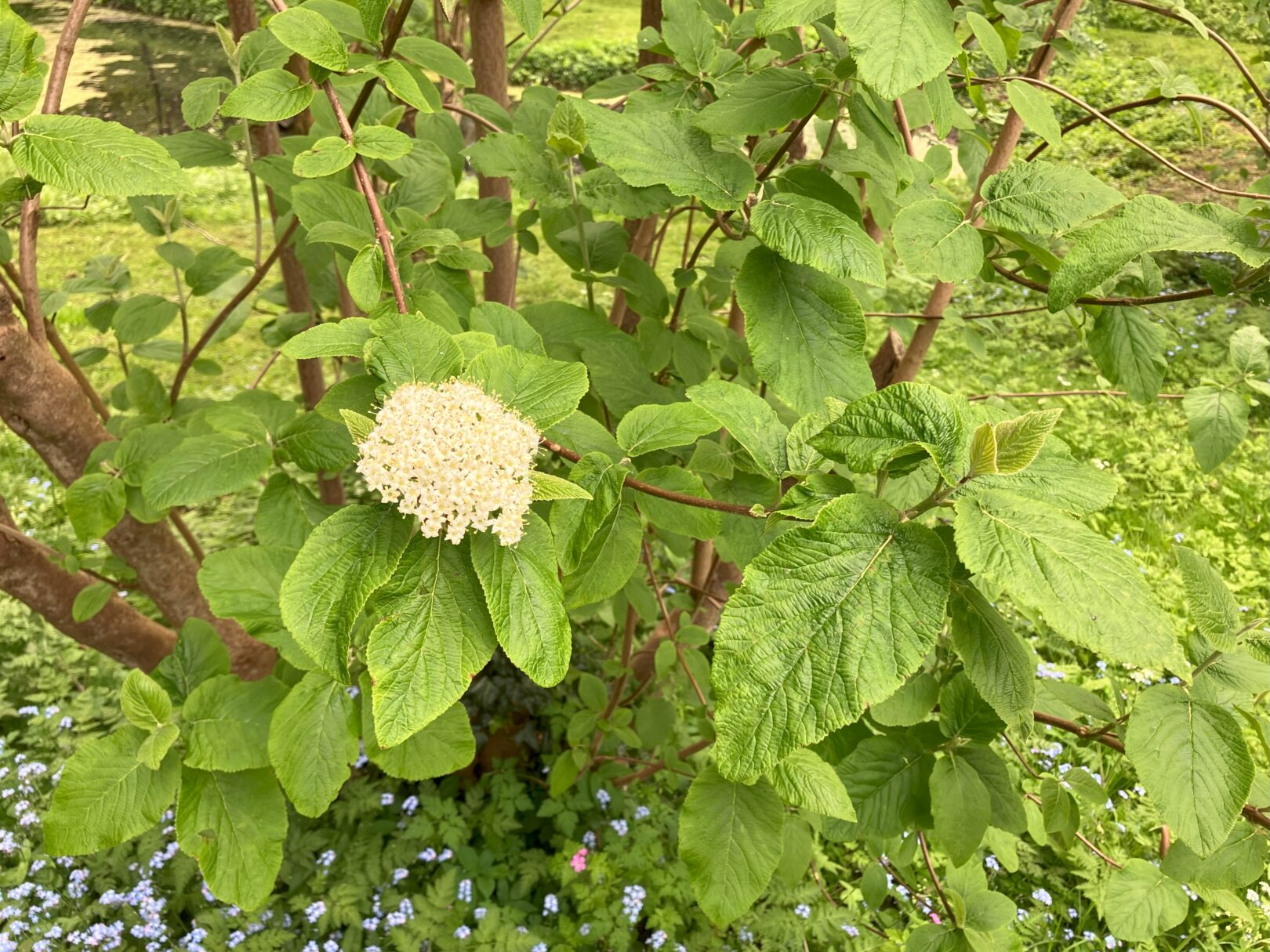#217 (Sh.17) COMMON WAYFARING TREE
Viburnum lantana

Planted: 1931
This shrub is on the west side of the Viburnum Walk.
Purchased from James Smith (Scotland Nurseries), Tansley, Matlock, Derbyshire in 1931
Native to central, southern and western Europe (north to Yorkshire in England), northwest Africa, and southwestern Asia. It is a common hedgerow plant and found along waysides.
A deciduous shrub or small tree growing to 4 to 5 m tall.
Leaves are opposite, simple oval to lanceolate, 6 to 13 cm long and 4 to 9 cm broad, with a finely serrated margin; they are densely downy on the underside, less so on the upper surface.
Flowers are small, around 5 mm, and creamy-white, produced in dense cymes 4 to 10 cm width at the top of the stems; they are produced in early summer, polinated by insects.
Fruit is an oblong drupe 8 mm long, green at first, turning red, then finally black at full maturity, and contains a single seed, disbursed by birds.
An older name for the plant is hoarwithy. “Hoar” means grey-haired and refers to the hairs under the leaves, and “withy” means a pliant stem.
Grown as an ornamental plant for its flowers and berries.
The fruit is of low to zero toxicity, but may cause vomiting or diarrhoea if consumed unripe or in large quantities.